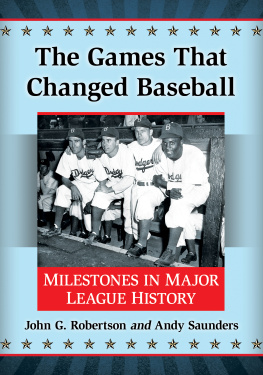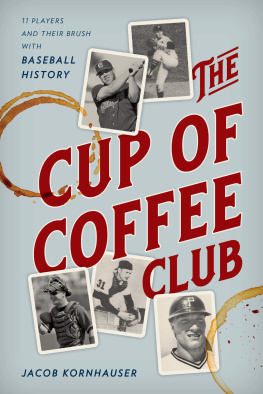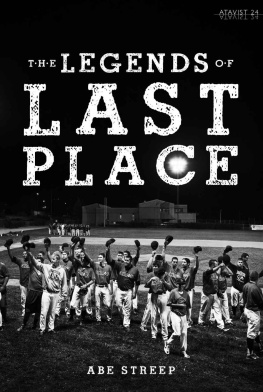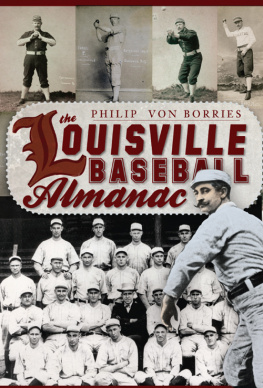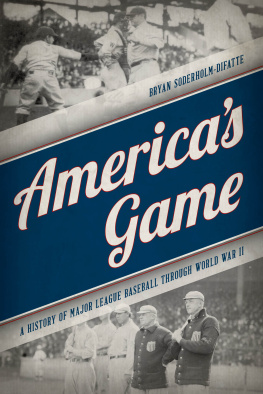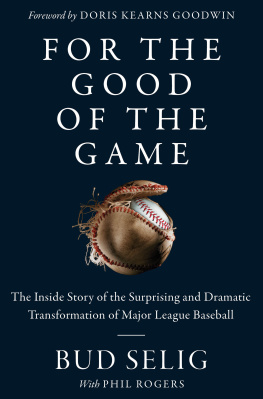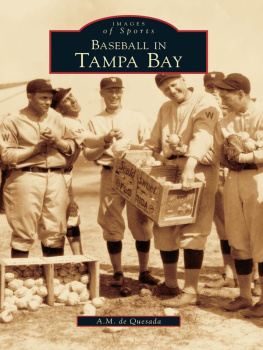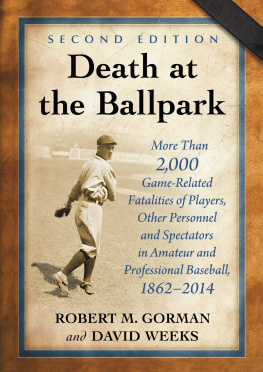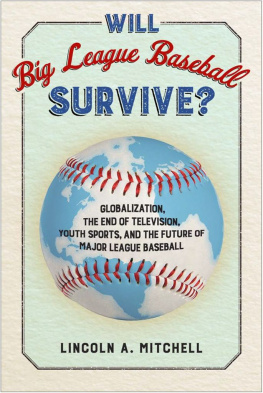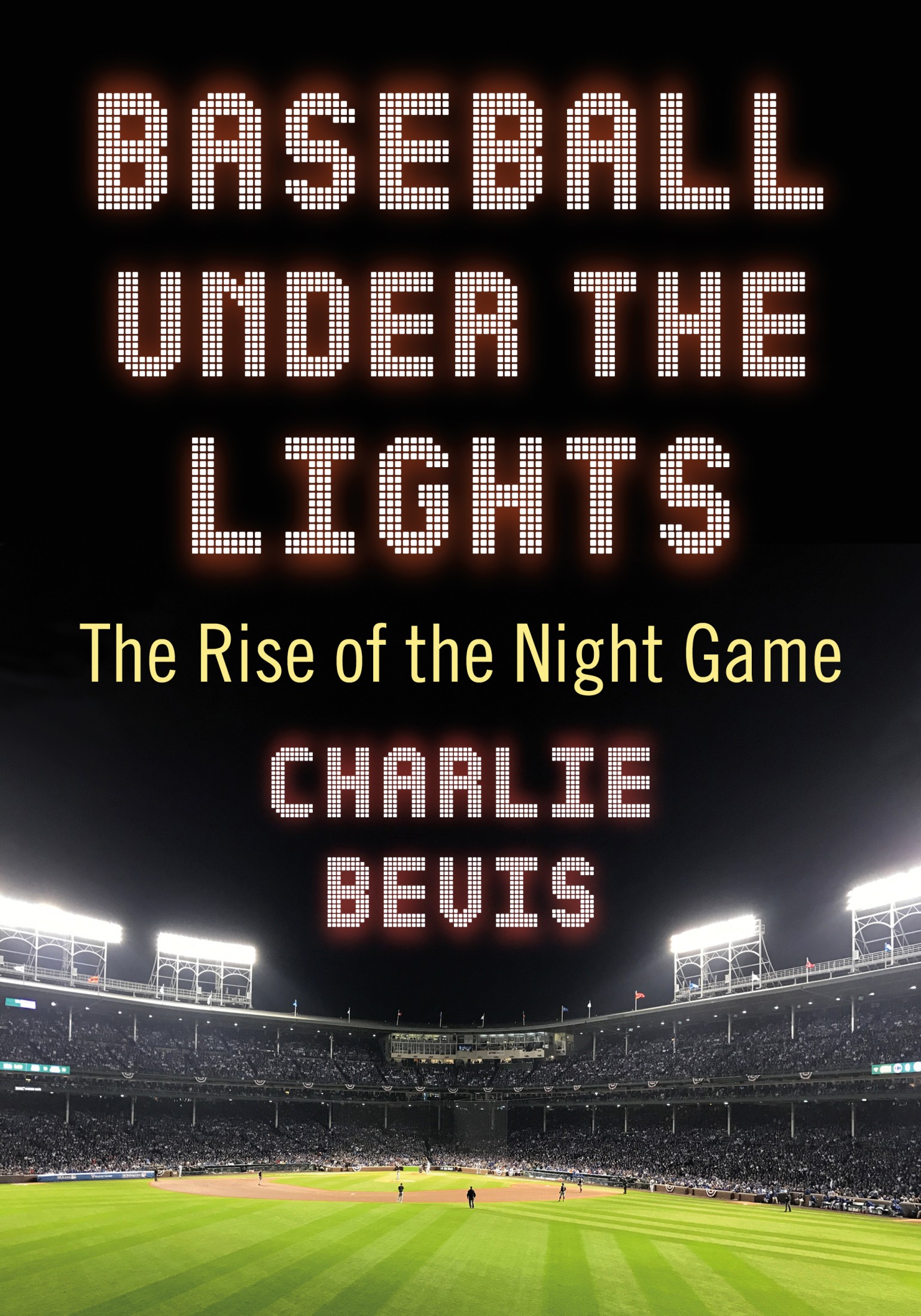Baseball Under the Lights
Also by Charlie Bevis and from McFarland
Red Sox vs. Braves in Boston: The Battle for Fans Hearts, 19011952 (2017)
Tim Keefe: A Biography of the Hall of Fame Pitcher and Player-Rights Advocate (2015)
Jimmy Collins: A Baseball Biography (2012)
Doubleheaders: A Major League History (2011)
The New England League: A Baseball History, 18851949 (2008)
Sunday Baseball: The Major Leagues Struggle to Play Baseball on the Lords Day, 18761934 (2003)
Mickey Cochrane: The Life of a Baseball Hall of Fame Catcher (1998)
Baseball Under the Lights
The Rise of the Night Game
Charlie Bevis

McFarland & Company, Inc., Publishers
Jefferson, North Carolina
Library of Congress Cataloguing-in-Publication Data
Names: Bevis, Charlie, 1954 author.
Title: Baseball under the lights : the rise of the night game / Charlie Bevis.
Description: Jefferson, North Carolina : McFarland & Company, Inc., Publishers, 2021. | Includes bibliographical references and index.
Identifiers: LCCN 2021013592 | ISBN 9781476680156 (paperback : acid free paper) ISBN 9781476642321 (ebook)
Subjects: LCSH: BaseballUnited StatesHistory20th century. | StadiumsLightingUnited StatesHistory20th century. | Baseball attendanceUnited StatesHistory20th century. | Television and baseballUnited StatesHistory20th century. | BISAC: SPORTS & RECREATION / Baseball / History
Classification: LCC GV863.A1 B479 2021 | DDC 796.357dc23
LC record available at https://lccn.loc.gov/2021013592
British Library cataloguing data are available
ISBN (print) 978-1-4766-8015-6
ISBN (ebook) 978-1-4766-4232-1
2021 Charlie Bevis. All rights reserved
No part of this book may be reproduced or transmitted in any form or by any means, electronic or mechanical, including photocopying or recording, or by any information storage and retrieval system, without permission in writing from the publisher.
Front cover: Wrigley Field at night during Game 3 of the 2016 World Series (Arturo Pardavila III)
Printed in the United States of America
McFarland & Company, Inc., Publishers
Box 611, Jefferson, North Carolina 28640
www.mcfarlandpub.com
Table of Contents
Preface
This history of night baseball completes a trilogy of the three predominant scheduling techniques used by professional baseball to increase attendance at the ballpark, complementing my two earlier books Sunday Baseball (2003) and Doubleheaders (2011).
My previous research on Sunday games and doubleheaders had at its heart the creation of knowledge to fill the absolute void on those two topics in the baseball literature. Those two books largely contained factual information regarding the who, what, when, and where of those topics, with some analysis to explain the why and how they changed the nature of the ballpark audience.
Night baseball is the third piece of the trilogy because in the 1990s there was no immediate need for a factual history of that subject, since the literature two decades ago provided a basic understanding of the facts. The book Lights On! The Wild Century-Long Saga of Night Baseball by David Pietrusza (1997) provided some historical background and reviewed the initial home night games played by major-league clubs. Providing some context was The Coming of Night Baseball, the fifth chapter in the book Creating the National Pastime: Baseball Transforms Itself, 19031953 by Edward White (1996). The literature on night baseball remains relatively scant, with the addition of the book Let There Be Light: A History of Night Baseball by Robert Payne (2010), which focused on the first major-league night game in Cincinnati.
The main shortcoming of this existing literature on night baseball is its focus on factual information, i.e., the trees rather than the forest, in the classic arboreal metaphor. My book on night baseball examines not only the forest (baseball business) but also the motives and desires of the foresters (ball-club owners) and big-picture issues regarding the hikers in the forest (ballpark spectators and later television viewers). This history of night baseball provides a much broader perspective about the who, what, and how of the topic and deeply examines the why of its adoption, expansion, and saturation.
Several research projects following the publication of Doubleheaders piqued my interest to dig deeper into daylight baseball, since my perspective then on ballpark spectatorship was admittedly somewhat simplistic, along the lines of more is better. What did not fall into that pattern was this question: why did the scheduling of poorly-attended daylight games continue for so long before club owners actively did something about it? My initial research to address this question was incorporated into my 2017 book Red Sox vs. Braves in Boston: The Battle for Fans Hearts, 19011952 .
The number of unresolved issues that came out of that project was the genesis of this book, since the adoption of night baseball at the major-league level most certainly did not follow the more is better principle. The factual foundation of night baseball in the literature did not seem nearly enough to truly understand the basis for its adoption and spread. Two big questions to address were: why was there a five-year gap between adoption in the minors and majors, and why was the spread so expeditious in the minors compared to the tortoise-like approach in majors? Other significant questions, previously unexplained, included: who created the seven-game restriction in the majors, why did it take so long before daylight games could be completed under lights, and why was the twi-night doubleheader so forgotten?
This book adds to the baseball literature by creating knowledge about the trends that impacted the adoption, expansion, and saturation of night baseball, both at the major-league level as well as the minor-league level. This book also adds factual information not already in the literature, especially regarding the progress of liberalization in major-league restrictions on the number of permitted night games and the disbanding of conventions to conduct night games on the premium daylight dates of home-opener, holidays, and Sunday. An additional new area of compiled knowledge is the competitive battle among three companies to engineer lighting systems in ballparks: General Electric, Westinghouse, and Giant Manufacturing.
Another contribution of this book to the baseball literature is that a comprehensive treatment now exists at both the major-league and minor-league levels for all three of the dominant scheduling techniques of night baseball, Sunday baseball, and doubleheaders. This book covers night baseball at both levels within its pages. While my earlier books about the other two techniques focused on the major-league level, the minor-league void on Sunday baseball now has been filled by my recent article Sunday Baseball Adoption in the Minor Leagues in Base Ball 11: New Research on the Early Game (2019) and doubleheaders at the minor-league level have a more expansive treatment in this book.
Introduction
Night baseball was the accelerant that completely transformed the business of professional baseball, as the audience for weekday games at night shifted to a larger, more economically diversified group of spectators than the smaller group of people that could attend afternoon daylight games.


